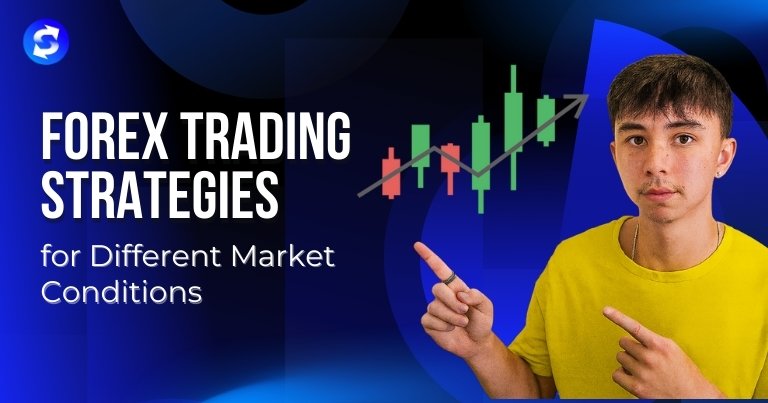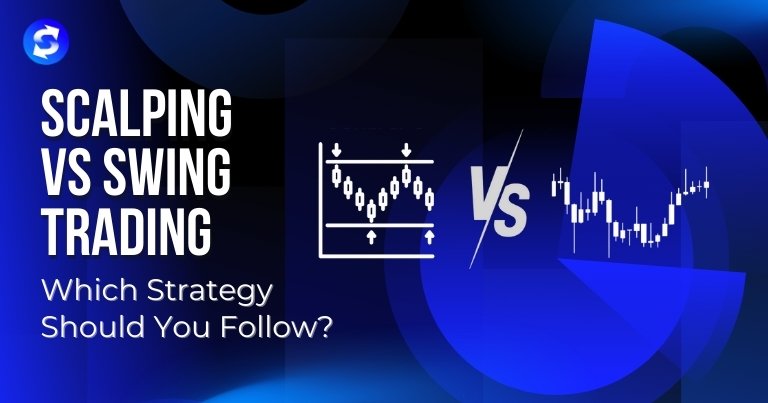
In the fast-moving world of forex, no two market days are exactly the same. One day, prices may drift calmly within a narrow range; the next, volatility may spike as economic data jolts traders into action. The reality is simple: the forex market is constantly shifting in rhythm and temperament, shaped by a complex web of economic forces, political events, and trader psychology.
For traders, the challenge is clear—there’s no single “set-and-forget” method that works in every scenario. Success comes from knowing how to adapt your approach to the conditions at hand. That means recognising what kind of market you’re in and choosing the right trading strategy to match.
In this guide, we’ll explore some of the most effective forex trading strategies, how they align with different market conditions, and how disciplined execution can turn market uncertainty into opportunity.
Understanding Why Market Conditions Matter
Before diving into strategies, let’s address why adapting to market conditions is essential.
Many beginners make the mistake of clinging to one strategy—say, scalping or trend following—without considering whether the market environment actually supports that approach. The result? Frustration, inconsistent results, and missed opportunities.
Market conditions affect:
- The reliability of trade setups – A moving average crossover might work beautifully in a trending market, but it can give false signals when prices are range-bound.
- Risk levels – Volatile markets can offer bigger rewards, but also carry sharper drawdowns if stops aren’t placed wisely.
- Trade frequency – A scalper thrives on active price swings, whereas a swing trader might prefer a steadier pace with fewer, higher-quality setups.
Just as a sailor adjusts their sails to match the wind, a trader must adapt their tactics to market movement.
Core Forex Trading Strategies
Here are five well-established strategies used by traders across the globe. Each comes with its own strengths, weaknesses, and ideal market environment.
1. Trend Following
Best suited for: Bullish or bearish markets with clear directional movement.
Trend following is all about going with the flow. The trader’s aim is to spot the dominant price direction—up or down—and ride it until momentum fades.
How it works:
- Identify the trend using tools like moving averages, RSI, or trendlines.
- Enter trades in the direction of the trend.
- Hold the position until signals of reversal appear.
Why it works:
Markets often move in waves, with strong trends lasting for days, weeks, or even months. By trading in the trend’s direction, you align your position with the path of least resistance.
Pro tip: In a strong uptrend, minor pullbacks can offer excellent entry points. In downtrends, short rallies are opportunities to enter sell positions.
2. Mean Reversion
Best suited for: Ranging or consolidating markets.
The mean reversion approach is built on a simple premise: prices eventually tend to return to their historical average. If a currency pair strays too far from its “mean” without fundamental justification, traders anticipate a snap back toward that average.
How it works:
- Identify the asset’s average price over a set period.
- Look for extreme deviations from this average.
- Buy undervalued conditions, sell overvalued conditions.
Why it works:
Excessive moves often correct themselves—especially in the absence of news or strong sentiment shifts.
Pro tip: This method requires patience and discipline. Avoid chasing prices before a reversal signal confirms the move.
3. Momentum Trading
Best suited for: Strongly trending or high-energy market phases.
Momentum traders look for assets showing rapid price movement and jump in to capture gains before the move exhausts.
How it works:
- Scan for currencies making strong percentage moves.
- Use volume, momentum oscillators, or breakout levels to confirm strength.
- Enter trades early in the momentum surge, exit before the reversal.
Why it works:
Markets often continue moving in the direction of a strong initial push, especially after news releases or major technical breakouts.
Pro tip: Momentum can fade quickly—set clear profit targets and avoid overstaying a trade.
4. Swing Trading
Best suited for: Medium-volatility conditions with identifiable short-term trends.
Swing trading aims to capture price “swings” lasting from several days to a few weeks. Unlike day trading, swing traders don’t need to watch charts all day—but they still rely on technical setups and market timing.
How it works:
- Identify mini-trends or chart patterns such as flags, pennants, and head-and-shoulders.
- Enter near the start of a swing, exit before the reversal.
- Use stop-losses to protect against unexpected breakouts or breakdowns.
Why it works:
Shorter-term price moves can be easier to predict than long-term macro trends. Swing trading allows for flexibility without the intensity of scalping.
Pro tip: Combining swing trading with a solid understanding of support and resistance can boost success rates.
5. Scalping
Best suited for: Highly liquid, fast-moving markets—especially during active sessions.
Scalpers thrive on speed. They place multiple trades within minutes, aiming to profit from tiny market inefficiencies.
How it works:
- Use ultra-short timeframes (1- or 5-minute charts).
- Enter and exit quickly, often within seconds to minutes.
- Rely on real-time data and tight spreads.
Why it works:
Small, frequent wins can add up—if transaction costs and losses are kept under control.
Pro tip: Scalping demands focus, lightning-fast execution, and a disciplined exit strategy. Without these, small losses can snowball quickly.
Matching Strategies to Market Conditions
Different market moods call for different approaches. Let’s look at the four most common environments traders face—and the strategies that suit them best.
Bullish Markets
Characteristics: Prices trending upwards; optimism dominates; demand outpaces supply.
Effective strategies:
- Trend following – Buy into strength and ride the trend.
- Momentum trading – Capture sharp upward surges.
Example: If EUR/USD is steadily climbing after strong Eurozone GDP growth, a trend-following trader might hold long positions until key resistance is reached, while a momentum trader might jump in during a breakout above recent highs.
Bearish Markets
Characteristics: Prices trending downward; pessimism prevails; selling pressure dominates.
Effective strategies:
- Trend following with short selling – Profit from sustained downward moves.
- Momentum trading – Capitalise on sharp declines after negative news.
Example: If US job data disappoints, pushing USD lower across the board, traders could short USD/JPY to ride the downtrend.
Ranging Markets
Characteristics: Prices oscillate between clear support and resistance; no defined trend.
Effective strategies:
- Mean reversion – Buy at support, sell at resistance.
- Scalping – Profit from small, predictable price bounces.
Example: If GBP/USD is trapped between 1.2600 and 1.2750 for several sessions, mean reversion traders might buy dips to 1.2600 and sell rallies to 1.2750.
Volatile Markets
Characteristics: Large, unpredictable price swings; often triggered by news or economic events.
Effective strategies:
- Short-term momentum trading – Capture rapid surges or drops.
- Swing trading with tight stop-losses – Ride smaller trends within volatility.
Risk management tip: In volatile markets, position sizing and stop-loss placement are critical. It’s also wise to step back during the most chaotic periods if conditions feel untradeable.
Risk Management: The Strategy Multiplier
No matter the strategy, risk management is what keeps traders in the game long enough to see consistent success. A high win rate means little if one uncontrolled loss wipes out weeks of gains.
Key principles include:
- Position sizing – Risk only a small percentage of your account on each trade.
- Stop-loss orders – Always know where you’ll exit if the trade goes against you.
- Diversification – Avoid overexposure to one currency pair or correlated assets.
At Strategic Broking, we’ve seen traders turn solid strategies into consistent results simply by applying disciplined risk controls—and we’ve seen promising careers cut short when those controls were ignored.
Combining Strategies for Flexibility
The best traders aren’t rigid. They know how to shift gears between strategies—or even blend them—to suit evolving conditions.
For example:
- Trend + Swing: Hold a core position in the direction of the trend, while trading shorter-term swings around it.
- Momentum + Scalping: Use momentum to identify high-energy markets, then scalp small profits during bursts of activity.
- Fundamental + Technical: Let economic data guide your market bias, but use technical setups to time entries and exits.
Adaptability is a trader’s greatest edge. When you can recognise market shifts and respond fluidly, you’re no longer at the market’s mercy—you’re working with it.
The Role of Technology in Strategy Execution
Market conditions can shift in seconds. Having the right tools can make the difference between catching an opportunity and watching it pass you by.
Platforms that offer:
- Real-time data feeds
- Advanced charting capabilities
- Automated alerts for price levels or technical setups
- Low-latency execution
…are invaluable for executing time-sensitive strategies, especially in volatile or fast-moving markets.
Final Thoughts
The forex market is dynamic, diverse, and full of opportunity—but only for those prepared to adapt. A single strategy might serve you well in one phase of the market, but prove costly in another. By understanding the strengths of each approach, recognising which conditions they suit best, and applying disciplined risk management, you can trade with greater confidence and consistency.
At Strategic Broking, we believe that adaptability is the hallmark of a resilient trader. The market will never stop changing—your edge comes from changing with it.






